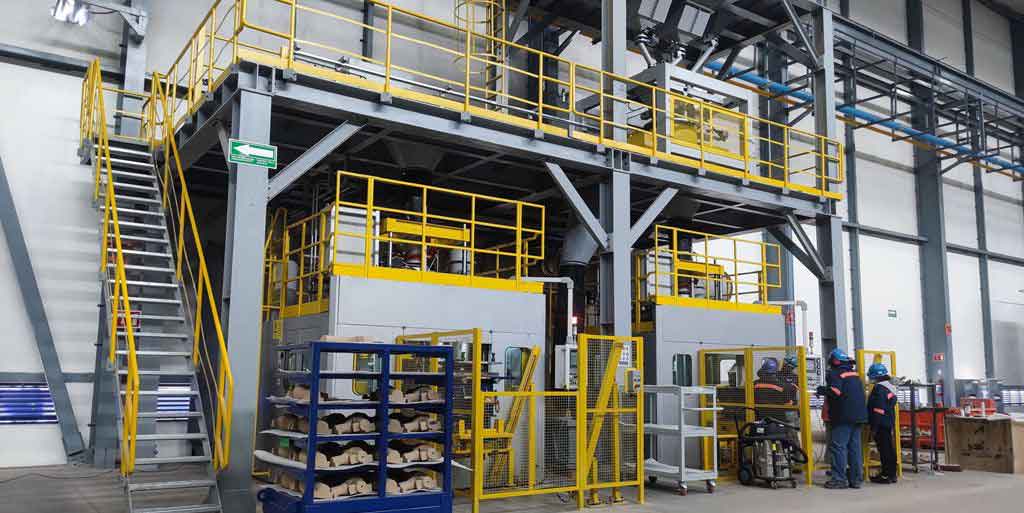In this study, we investigate the phase transformation behavior and mechanical properties of A487-4B low-alloy steel casting under varying cooling rates. The continuous cooling transformation (CCT) curves were established through thermal simulation experiments, providing critical insights into microstructure evolution and hardness characteristics.

Experimental Methodology
The steel casting specimens (φ6 mm×75 mm) were processed using a Gleeble 1500D thermal simulator with chemical composition shown in Table 1. Critical transformation temperatures were determined through dilatometric analysis:
$$ Ac_1 = 747^\circ C,\ Ac_3 = 875^\circ C,\ M_s = 422^\circ C $$
| Element | C | Mn | Si | Cr | Ni | Mo |
|---|---|---|---|---|---|---|
| wt.% | 0.23 | 0.63 | 0.51 | 0.49 | 0.54 | 0.24 |
Phase Transformation Kinetics
The CCT diagram (Figure 1) reveals distinct phase regimes governed by cooling rate (CR):
$$ t_{8/5} = \frac{Q}{\pi \lambda \rho c} \left( \frac{1}{500-T_0} – \frac{1}{800-T_0} \right) $$
Where $Q$ = heat input, $\lambda$ = thermal conductivity, $\rho$ = density, and $c$ = specific heat. Key phase fractions were quantified through metallographic analysis:
| CR (°C/s) | Ferrite (%) | Pearlite (%) | Bainite (%) | Martensite (%) |
|---|---|---|---|---|
| 0.2 | 62 | 18 | 20 | 0 |
| 5 | 12 | 8 | 65 | 15 |
| 50 | 0 | 0 | 22 | 78 |
Hardness Modeling
The Vickers hardness (HV) shows strong dependence on martensitic content, following the relationship:
$$ HV = 185 + 2.8X_M + 1.2X_B $$
Where $X_M$ = martensite fraction (%) and $X_B$ = bainite fraction (%). Experimental hardness values demonstrate significant hardening at CR >10°C/s:
| CR (°C/s) | 0.2 | 5 | 10 | 20 | 50 |
|---|---|---|---|---|---|
| HV | 200 | 273 | 308 | 414 | 470 |
Microstructural Evolution
Three distinct transformation regimes were identified in the steel casting:
- Diffusive Regime (CR <5°C/s): Dominated by polygonal ferrite (PF) and pearlite (P) with bainitic start temperature:
$$ B_s = 455 + 23(\%Mn) – 18(\%Si) – 16(\%Cr) $$
- Intermediate Regime (5–20°C/s): Lath bainite (LB) formation following displacive transformation mechanism
- Martensitic Regime (>20°C/s): Acicular martensite (AM) with prior austenite grain size dependency:
$$ \lambda_M = 0.1D_\gamma^{0.5}CR^{-0.2} $$
Where $\lambda_M$ = martensite lath spacing (µm) and $D_\gamma$ = prior austenite grain size (µm).
Industrial Implications
The CCT diagram provides essential guidance for welding and heat treatment of A487-4B steel castings. To prevent HAZ embrittlement, interpass temperature should be maintained below:
$$ T_{max} = M_s – 150 + 45(\%C_{eq}) $$
$$ C_{eq} = C + \frac{Mn}{6} + \frac{Cr+Mo+V}{5} + \frac{Ni+Cu}{15} $$
For typical A487-4B compositions ($C_{eq} ≈0.48$), this yields $T_{max} ≈300^\circ C$, necessitating controlled cooling strategies in heavy-section steel castings.
Conclusion
This systematic investigation of A487-4B steel casting demonstrates that cooling rate fundamentally controls phase selection and mechanical properties. The developed CCT diagram and hardness model enable precise microstructure engineering through thermal management, critical for optimizing performance in cast-weld components.
